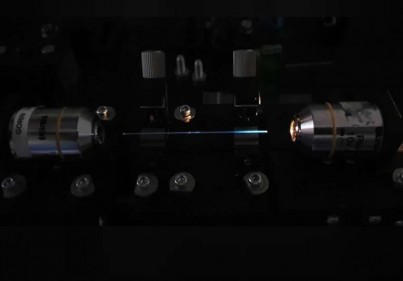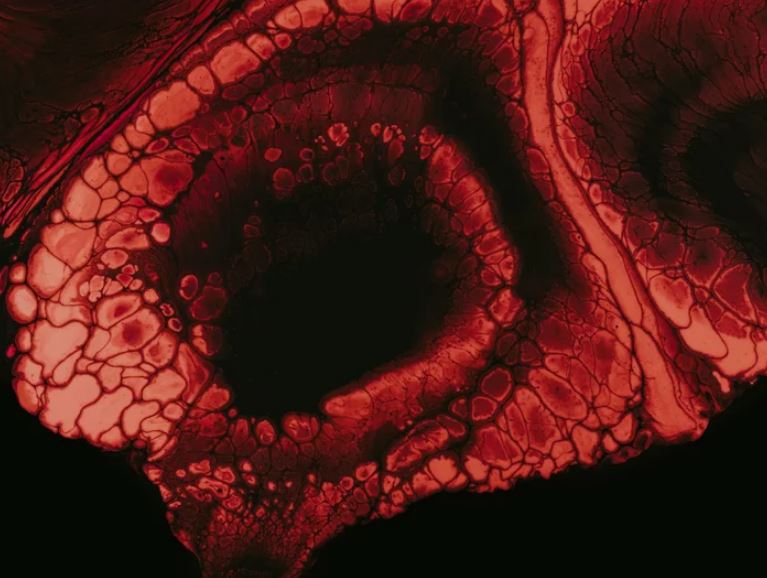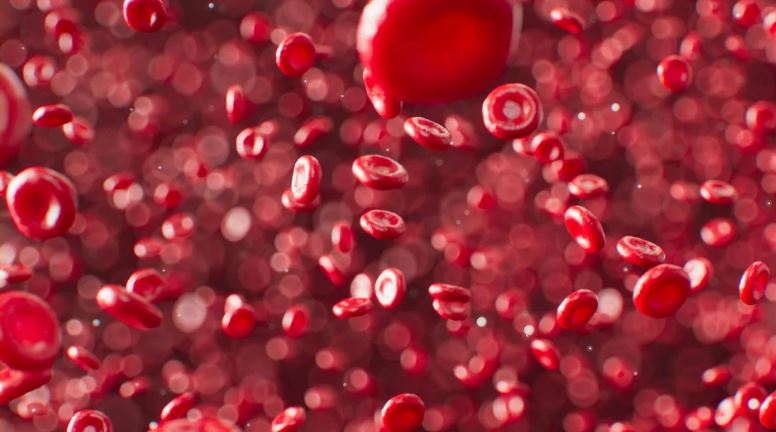Господдержка предприятий-производителей строительных материалов

Russian scientists have created a quantum-dot fiberglass emitting device that could be used as an endoscopic light or laser.
Researchers at Russia’s Skoltech have created a microstructure of modified fiberglass that could function as a tiny light for medical probes that probe the inside of blood vessels and other tubular cavities in the body.

Described in the journal Annalen der Physik, the microlamp consists of a piece of hollow-core optical fiber — a very small piece of tube made of glass. The inner surface of the tube is coated with a polymer layer and nanoparticles, and the ends are sealed with polymer membranes.
If the membranes are supplemented with specially calibrated mirrors, the lamp becomes a laser that specifically emits light of a specific color. This could be used in photodynamic therapy to destroy tumors of the endothelium of hollow organs that have been sensitized with special dyes.

Endoscopic probes made of fiberglass are a promising tool for obtaining information about hard-to-reach areas of the body. The optical fiber is thin enough to fit even into blood vessels. The stumbling block is in equipping the working end of the probe with the necessary instruments.
The part made in this study can serve either as a source of scattered light or, with further modifications and improvements, as a laser. The prospect of using a laser with a tunable wavelength at the end of an endoscopic probe is of particular interest, since it opens up possibilities for both diagnostics and treatment.
The key innovation in the Skoltech study is related to the reduction of light transmission losses, which are typical for devices of this kind. The light-emitting microstructure is based on an optical fiber tube several centimeters long with an internal diameter of 0.25 millimeters and an external diameter of 0.5 millimeters.
The inner surface of the core is coated with a polymer layer, which is then covered with a layer of so-called quantum dots — luminescent nanoparticles provided by Saratov State University. The fibers themselves are manufactured by Nanostructured Glass Technology, also based in Saratov.
The nanoparticles in the layered coating can be fused together using a special heat treatment that dehydrates the polymer layers and reduces the roughness of the nanocomposite coatings, and as a result, reduces light transmission losses. Notably, the required heating is achieved without unnecessary costs in the manufacture of the optical resonator, since this involves applying polymer membranes at both ends, covered with mirrors made of titanium oxide layers, and this operation requires heating.
The resulting system is promising for the creation of optically pumped lasers operating in a fairly wide range of wavelengths from 0.3 to 6 μm. Quantum dots serve as the active medium of the laser, and the rest of the structure works as a resonator. The light beam comes out of the end of the cylindrical microstructure, and the color of the beam is determined by the characteristics of the quantum dot layer.
Alternatively, the microstructure can be heated without installing mirrors, obtaining a diffuse light source. It will illuminate the surrounding space in all directions. The color of the radiation will also depend on the characteristics of the quantum dot layer. Depending on the indications, a probe equipped with a light-emitting microstructure can be used for superficial examination, deep tissue visualization, and removal of pathological tissue using photodynamic therapy.
Source: hi-tech.mail.ru